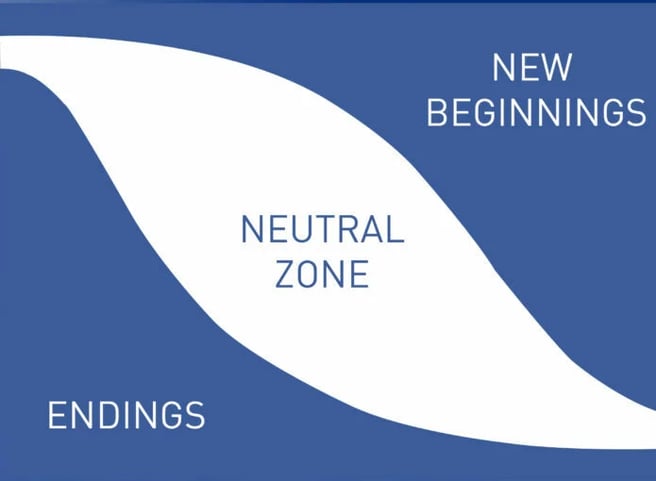Given the amount organisational leaders talk about people and capabilities, it’s only right that we look at the most immediate and often under-considered question: How is the transition going for the people themselves?
When cloud project leaders are asked this question, they usually default to technical responses. They might answer that they have successfully closed two data centres, decommissioned 20 servers, moved 200 workloads, or cut the time it takes to do a certain task by 30 percent. These metrics are important, but they are not the whole story.
Are people embracing the changes cloud is bringing to their daily work? Are they confident they can do their jobs well in a cloud-focused environment? Do they feel as valued by the organisation as they did before? These are all valid issues workers involved in a cloud project are dealing with – sometimes visible, sometimes under the surface.
Issues around change, of course, extend way beyond the cloud. They crop up in every organisation that is bringing on a new project, realigning departments or merging with an outside group.
Bridging people and need
The dynamics of organisational change are well laid out in the late William Bridges’ Transition Model.
Bridges, an author and management consultant, stressed the importance of managing transitions in the workplace. He described “transition” as the psychological process of adapting to change. In his model, Transition consists of three phases: Endings, or letting go of the past; moving through a Neutral Zone, and making New Beginnings.

Transitions can be difficult to navigate in any field. For example, an x-ray technician whose job was simplified significantly by her department’s move from analogue to digital systems. What used to involve multiple steps (prepping the patient, positioning multiple plates, taking multiple images) was reduced almost to the press of a button. Her job got easier and the department became more productive. Patients were happy with the change, as appointments were shorter and they received results faster. Yet the technician still struggled with the change, taking months to become comfortable with the new process.
This can also happen to employees involved in a cloud transformation initiative. Take a systems engineer whose position is being transitioned to cloud architect. This person is taking on an exciting new job that is important to the organisation’s move to the cloud. Good, right? Well, it may not be perceived that way by everyone. As people are faced with change, they experience a series of losses – loss of control, loss of confidence, loss of competence and loss of their identity. The systems engineer may have been happy in their old job. They were a subject matter expert, knew where the bodies were buried, and knew who to go to and how to get things done. That legacy of knowledge may no longer be important in their new role, leaving them feeling less needed or important.
The Human Impacts of Agile
Cloud makes organisations more agile. With cloud, iterations and changes can occur on a more frequent basis than ever before. This generates huge benefits for the company as a whole, helping it enter new markets, meet customer demands better and be more competitive in the marketplace. But these changes also create human impacts organisations need to address. Changes in job titles, responsibilities and even hours of work may not happen all at once or reach all corners of the organisation at the same time. But what is certain is that a transition to cloud will eventually bring about more change.
In the Bridges model, some people do not adapt to change as well as others. They are reluctant to let go of the past. Organisations need to develop a strategy for them to move to the next phase – the Neutral Zone, where the past is gone but the new behaviour is not yet fully formed. If the person is not embracing the changes brought about by cloud, leaders should not instantly conclude that the person does not “get it”; leaders should instead ask themselves whether they are providing the information and learning resources to help people through the change.
Managing employees during a cloud transition is about much more than just learning new technical skills. In the cloud, the entire way things are done is different. Going from a waterfall-type project management model to agile, Scrum, DevOps and Continuous Delivery represents a totally new way of operating.
Cloud also breaks down silos, requiring employees to work with business units they may not have interacted with before. Now the employee has to engage in a cross-functional team with new people and unfamiliar skill sets.
Seventy percent of change initiatives fail because the people part of the equation is left out. Leaders have to explain clearly to a person that their move to become a cloud technologist will involve changes in their work process, title and role in the organisation. When change happens, the person needs to know what is changing, how it is changing and why it is changing. Specifically, employees need to know what you want them to stop doing, start doing and continue doing.
Retraining is a Starting Point – Transitioning Requires More
When it comes to the cloud, retraining is a given. However, managers do not always do the proper amount of retraining, and they seldom prepare their employees for it. To make any training effective, you have to engage the employee’s willingness before you teach the new skills. Say you are going to train someone on DevOps. That person needs to have the internal motivation to learn what DevOps is, and why it is important to them. Unless you can communicate what it means for them, what is in it for their department, and how it is going to benefit the company as a whole, they may not be motivated to develop DevOps skills quickly enough to meet the expectations of the business.
It costs a lot to hire someone new and upskill them. So if you already have a team, make sure you are managing that talent to the best of your ability. Focus on building confidence and motivating the individuals to want to do this new job.
Managing the Process
How can managers manage employees through their transition journeys? There are steps they should take throughout the process, and best practices to employ in specific phases.
The overall recommendation is to communicate, communicate, communicate. Be clear about what is changing and what is not. Never underestimate the number of times employees need to hear the same consistent message before it really sinks in. For each phase of William Bridges’ Transition Model, here are some specific recommendations to help manage people through the transition.
For managing Endings:
- Specify what is and is not over.
- Talk about how the change will impact the entire team.
- Create an open-door communication practice and actively seek feedback from all parts of the organisation.
For those in the Neutral Zone:
- Establish temporary rules of engagement. Allow people to experiment. Projects have cutover dates; people do not.
- Be clear about performance expectations.
- Be compassionate and empathetic.
For people ready to start New Beginnings:
- Be open to shifts and corrections.
- Highlight quick wins.
- Clearly articulate the new identity and the new world for your people. Make sure they know what it means for them and the organisation.
Thinking about individual team members, each in a different stage, here are three different ways a manager might best provide support.
Although the cloud enables agility and rapid change, a transition to the cloud takes time. To get where they need to go, organisations have to create a plan and make sure they are pushing forward on all fronts — leveraging the right tools, acquiring the right resources, and configuring the organisation to compete in the new environment. People are a critical part of the plan and are very often the key to its success, or its failure.
There is no clear cutover for a team, and managers need to dedicate time and effort to the individual transitions their employees are going through to help them move along the path to success.
Managing the change process won't always come easy or feel like the most natural thing in the world, but you'll be a lot more assured to win if you utilise your most effective instrument: your people. Build communication into your transitioning journey and you'll find it's your team's own capabilities that will make transformation a reality.
For more on this topic, please read "Organisational Alignment - Risks and Resilience" and "What Employees Want From The Hybrid Workplace".




